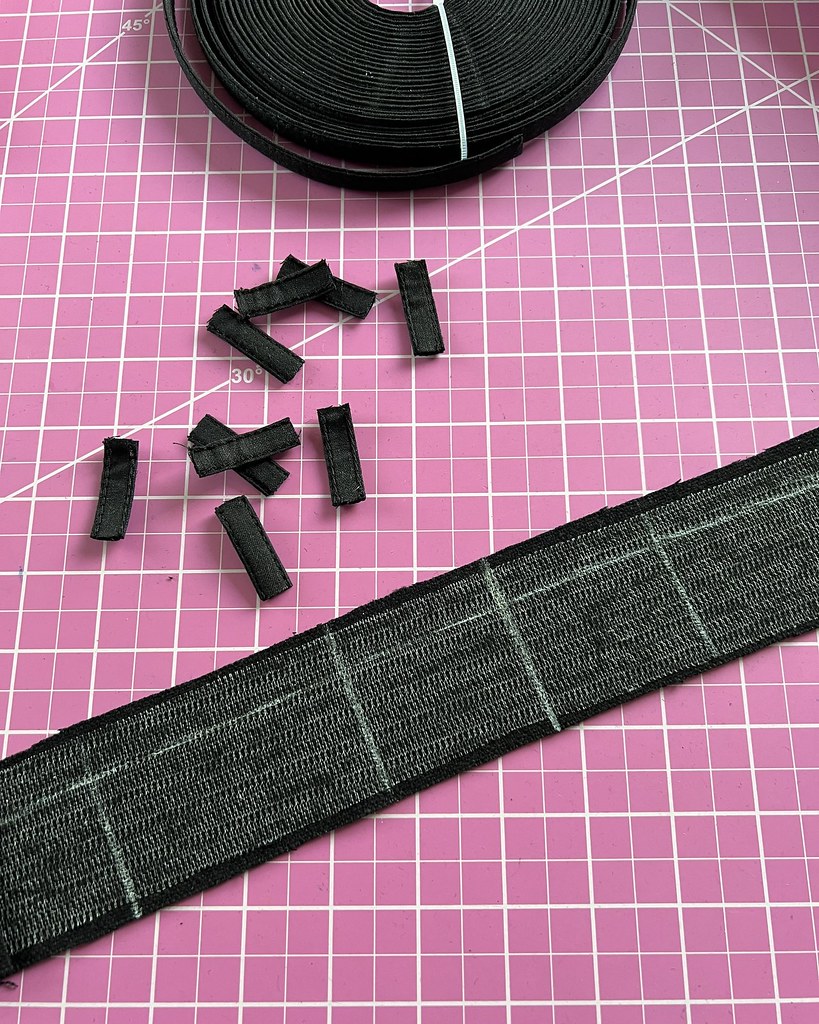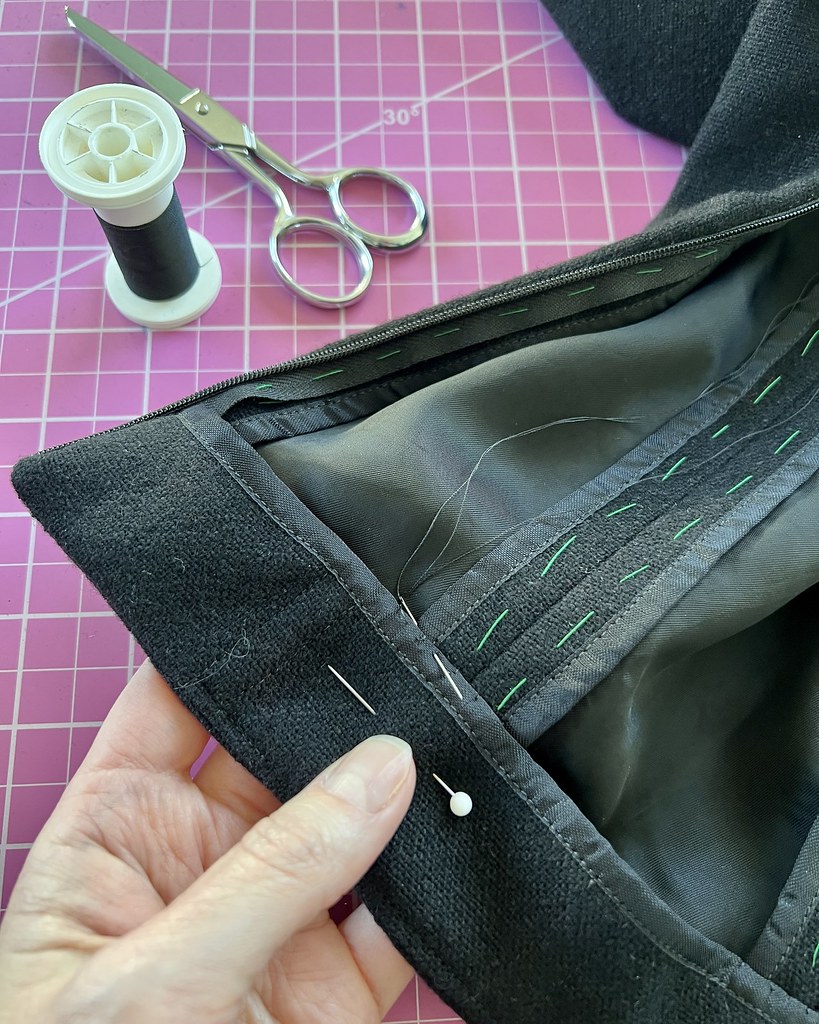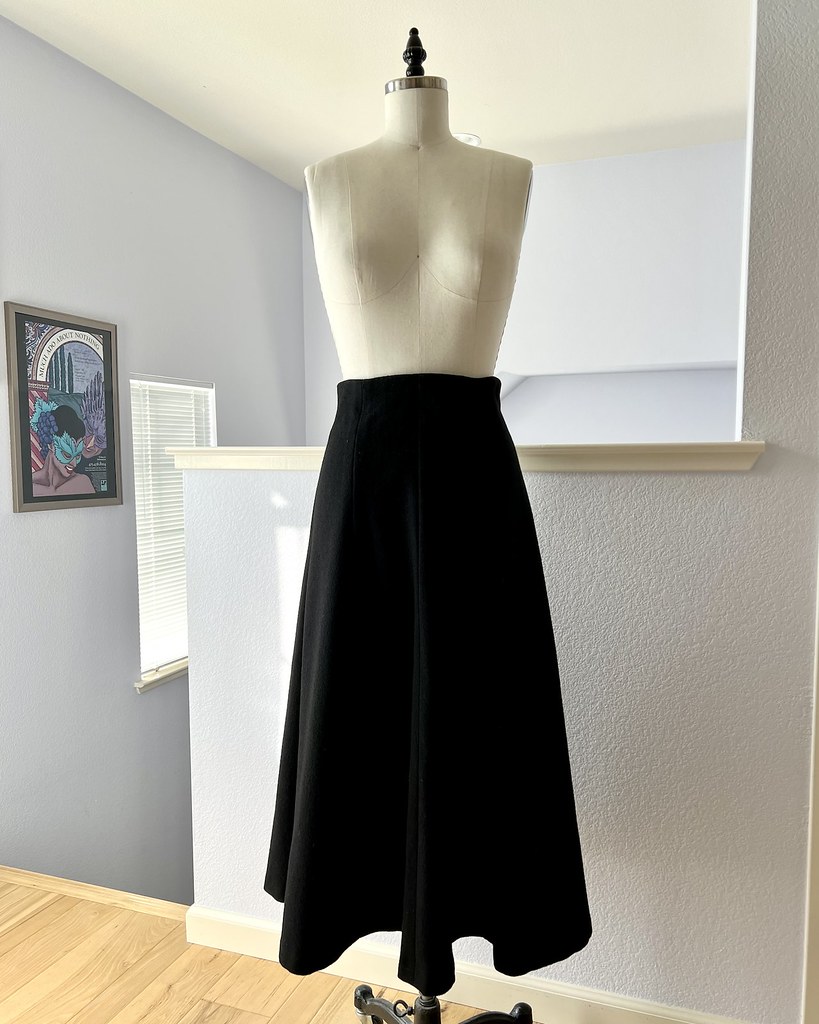While it may not be the most interesting item in the world to make, a black wool skirt is certainly a useful one.
I have been meaning to try Vogue 1961 for some time, and it seemed like a good option for the textured black wool I specifically purchased for a long skirt last year.
I did decide to add some extra length to the skirt. Although the model looks like she's tall, and the skirt is a nice tea length, when holding the pattern pieces up to my body, it just didn't look like they were going to be that long.
I was also concerned that a lightweight rayon lining was going to drape differently than the wool and potentially need to be hemmed much shorter to keep the lining from peaking out of the skirt during wear. Although I haven't ever underlined a skirt in this manner before, I thought that I might as well give it a try.
So before any of the construction began, the main task was to hand baste the layer of wool to the rayon lining. If you have followed me for any period of time, you are already aware of my love of hand sewing . . . but this amount of basting one black layer of fabric to another was slightly tedious, even for me. After working with a length of black thread, I quickly realized that using a contrasting basting thread was going to be a whole lot easier on my eyes!
Once that process was complete, the project was very straight forward, sewing each gore to the next. Since this would be underlined instead of lined, I finished my raw edges with rayon seam binding.
Whether the small amount of exposed wool in the seam allowance would be itchy on my skin was something I thought about, but in the end, decided would not be too much of a problem.
The pattern instructions suggest an invisible zipper, and since this is a princess seam finished with a facing, I decided to go for the invisible zipper.
I ended up adding a few pieces of plastic boning to the facing to keep the upper edge from collapsing.
This has become a standard addition to most of my skirts, and while it takes a little bit of extra effort, I have never been disappointed with the technique.
I also added a lightweight fusible interfacing to the facing.
And if you think that I am going to spend my time removing all of those basting threads, you would be wrong!
Honestly, it's rare that I remove any basting threads unless they are visible from the outside of the garment.
The facing was tacked in place along each seamline.
For the hem, I hand stitched the two layers of fabric together just inside the hemline. This keeps the layers from separating and shifting as the hemline is folded and stitched into place.
And here is my classic black wool skirt.
This garment has definitely come in handy this Winter. The textured wool does have a tendency to show lint, but that's just part of wearing dark colored wools, I guess!



















Lovely!
ReplyDeleteSimple, elegant and sure to be a workhorse wardrobe piece! The boning is such a wonderful idea, yet it terrifies me to try it; I know mine would show as pillars and dips along the waistband (à la the Golden Gate Bridge), lol.
ReplyDeleteVery nice! I have been thinking about a similar project and am very curious -- have the wool seam allowances ended up being itchy?
ReplyDelete